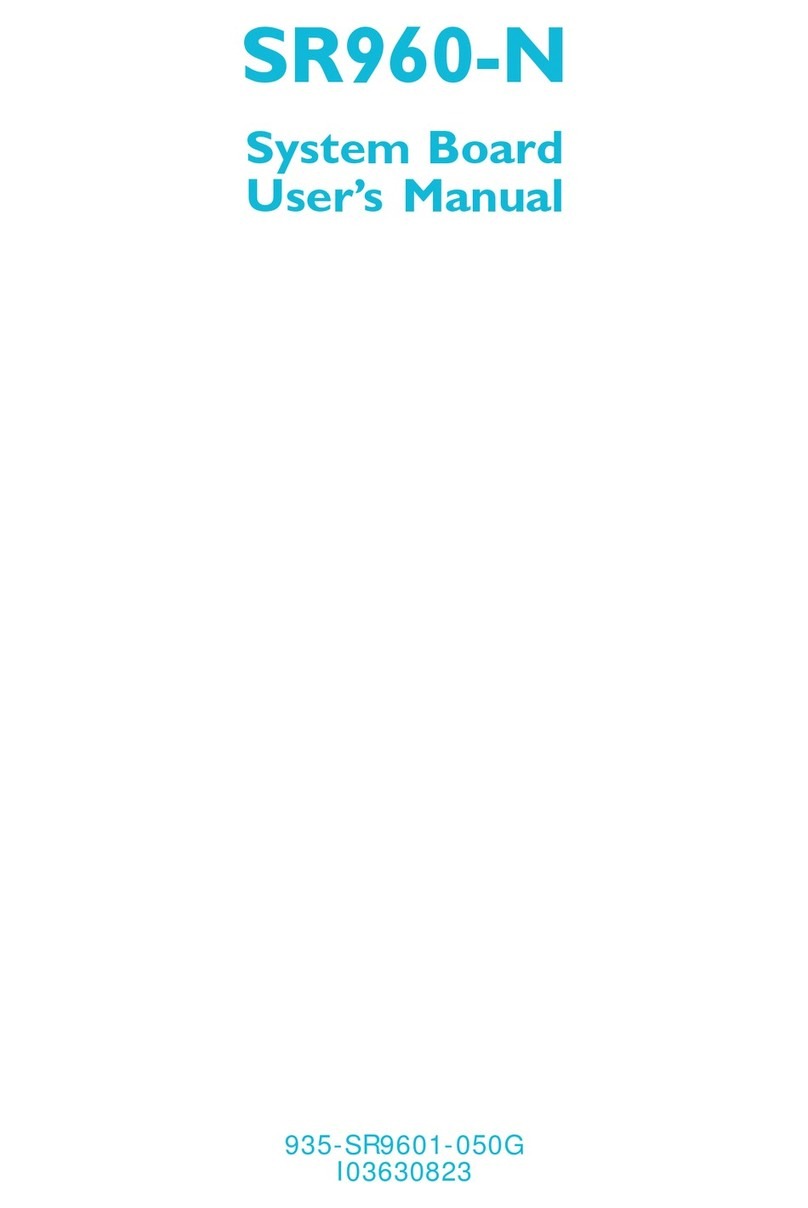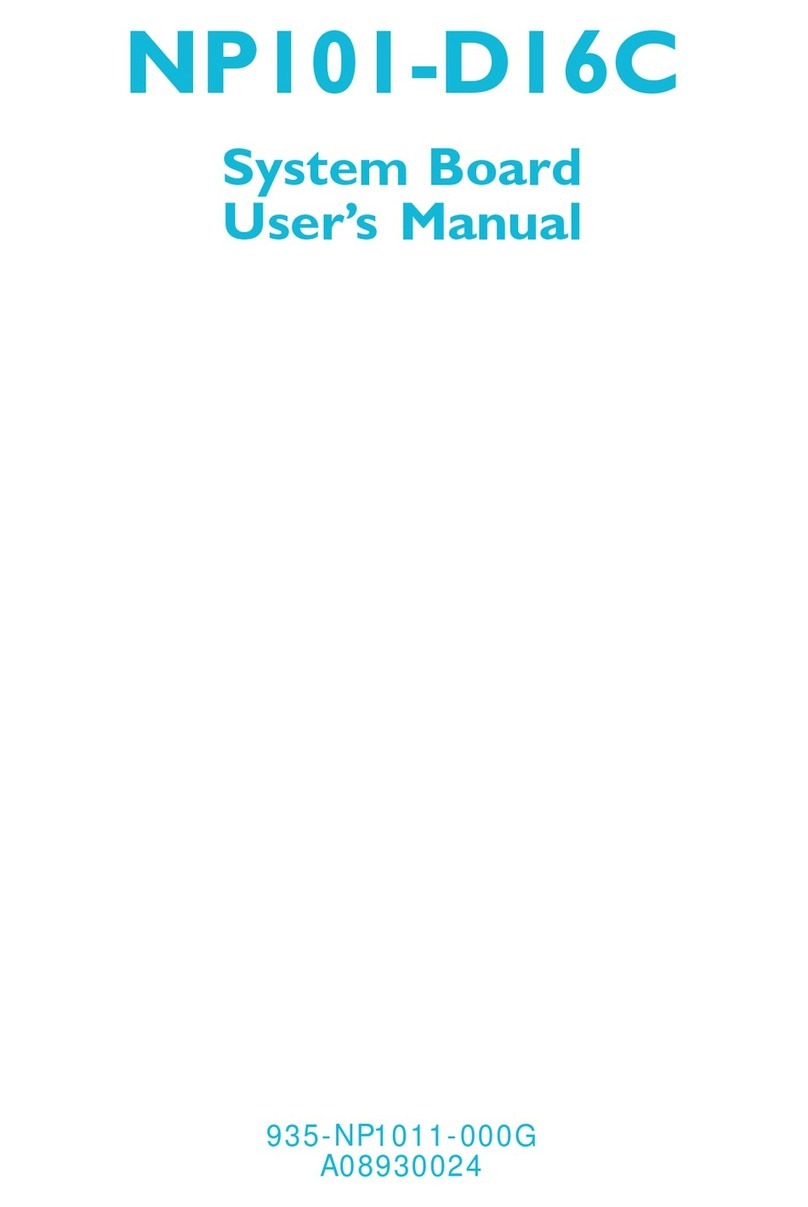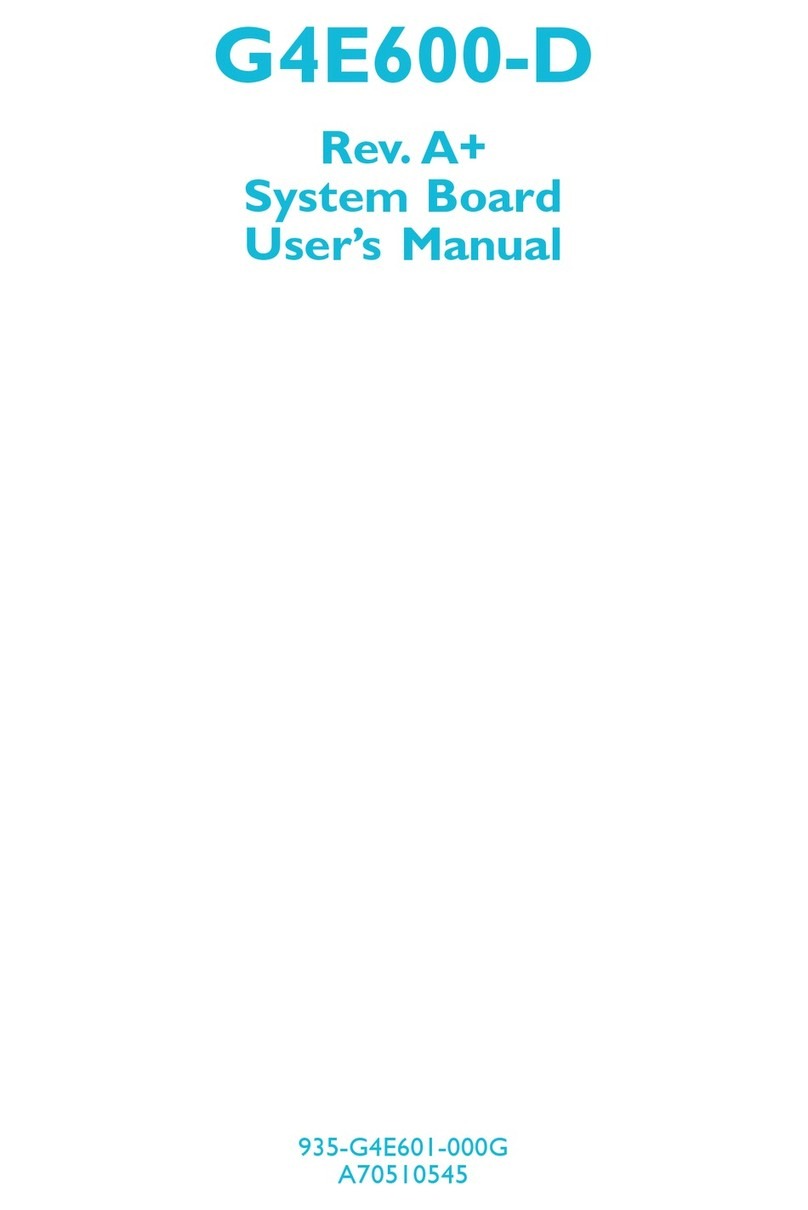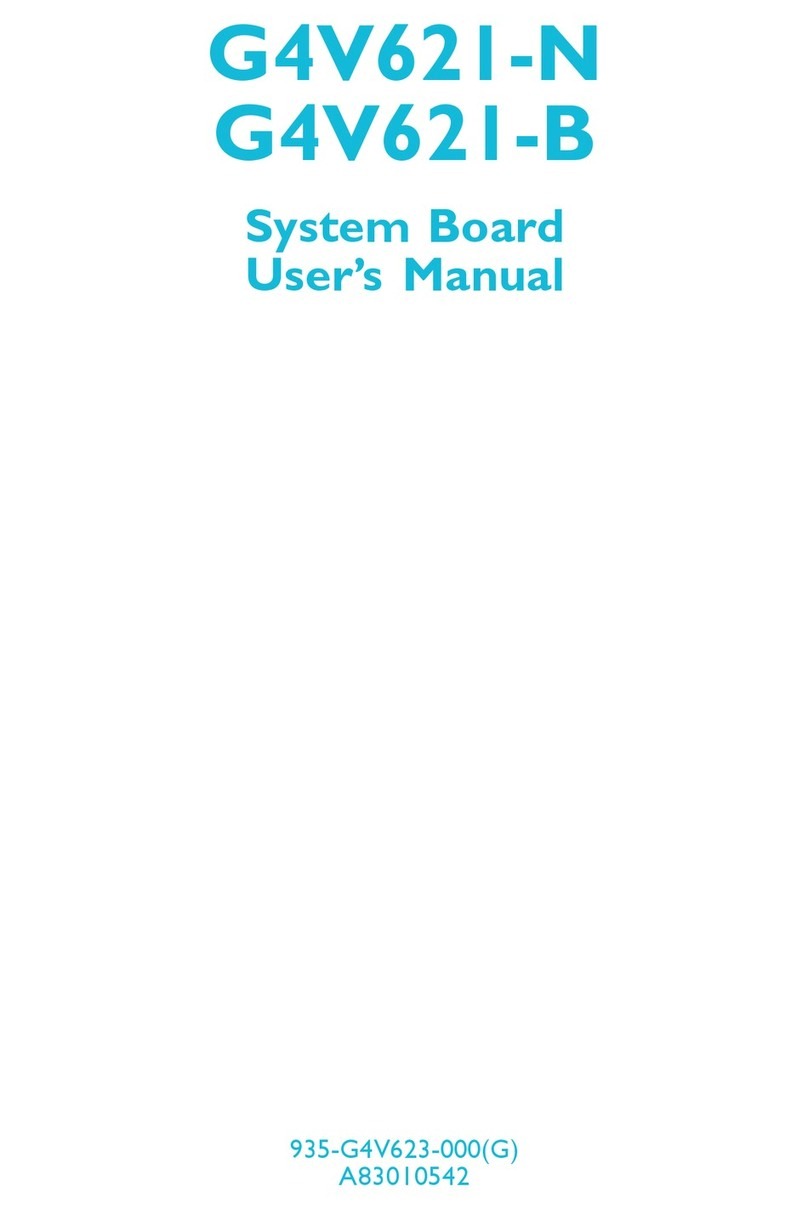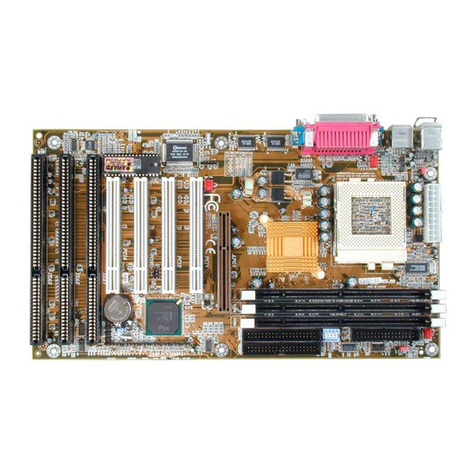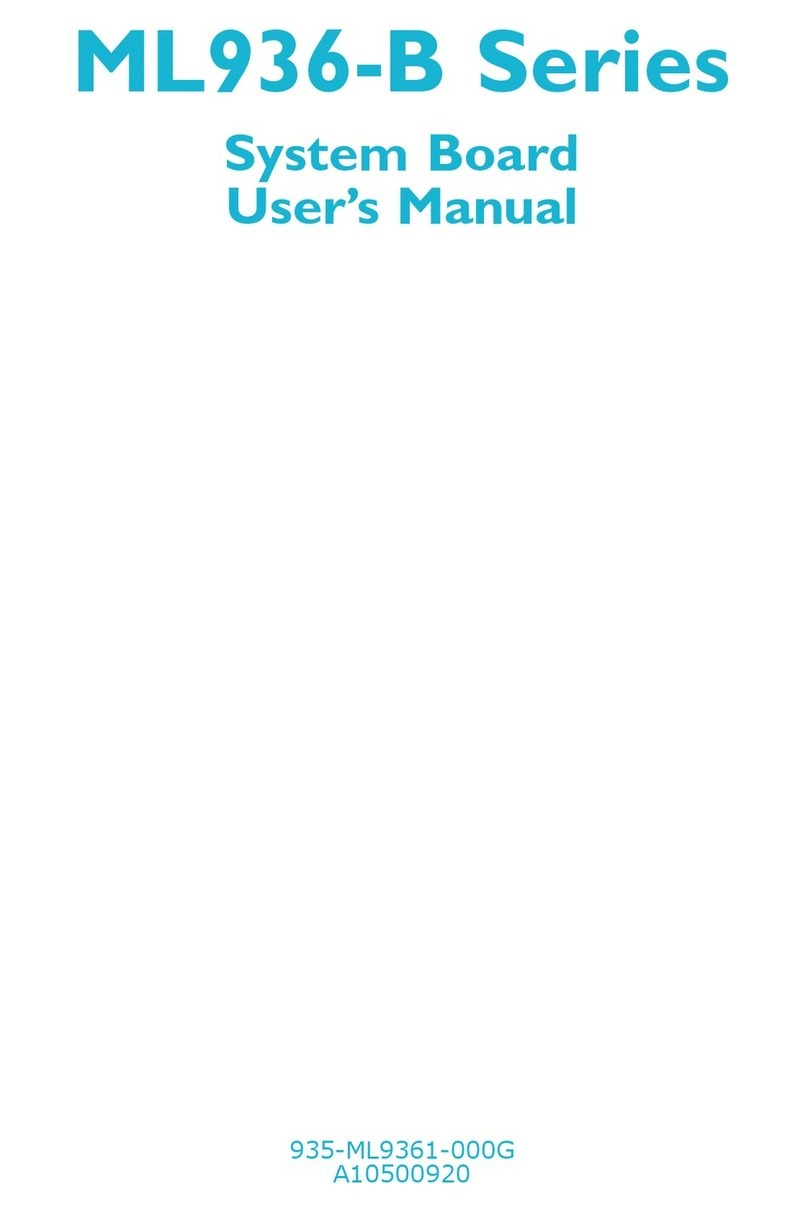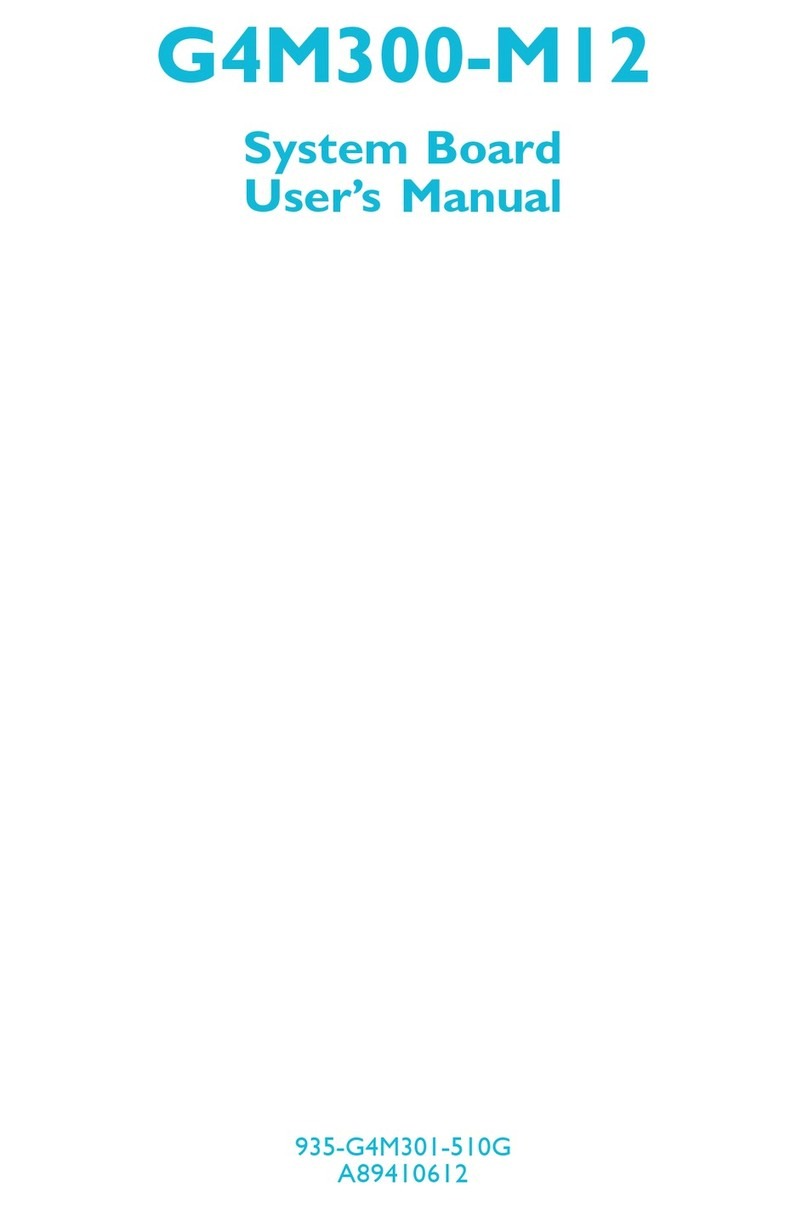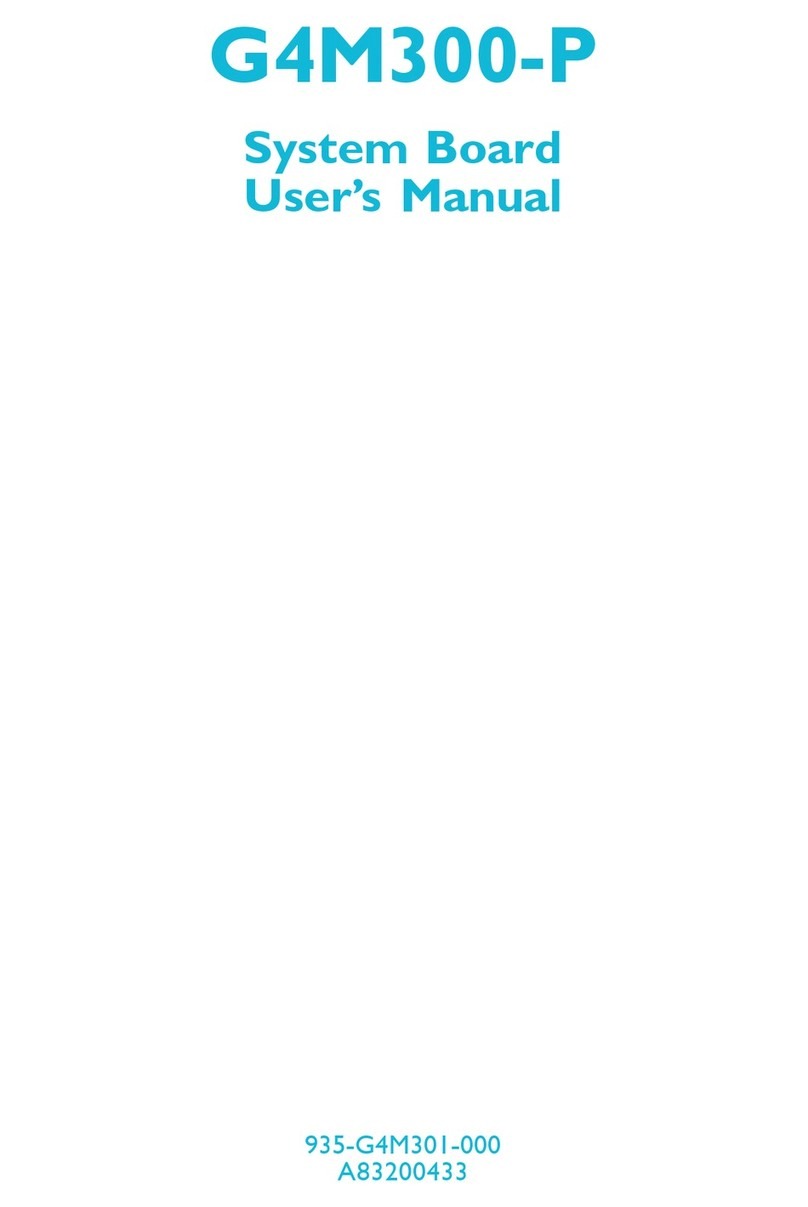Introduction
1
8
• Supports ACPI STR (Suspend to RAM) function
• Wake-On-Events include:
- Wake-On-PS/2 Keyboard/Mouse
- Wake-On-USB Keyboard/Mouse
- Wake-On-LAN
- Wake-On-Ring
- RTC timer to power-on the system
• System power management supported
• CPU stopped clock control
• Hardware supports SMI green mode
• Microsoft®/Intel®APM 1.2 compliant
• Soft Power supported - ACPI v1.0a specification
• AC power failure recovery
Damage Free Intelligence
• Monitors CPU/system temperature and overheat alarm
• Monitors 5VSB(V)/VBAT(V)/1.5V/3.3V/5V/±12V/CPU(V)
voltages and failure alarm
• Monitors CPU/chassis/2nd fan speed and failure alarm
• Read back capability that displays temperature, voltage and fan
speed
• Watchdog timer function
Onboard Graphics Features
• Graphics memory
- Shares 512K/1MB/8MB of the system memory in DOS
mode
- Uses Dynamic Video Memory Technology (DVMT) in
Windows mode
• Graphics controller
- Core frequency of 200MHz
- 350MHz integrated 24-bit RAMDAC
- Analog display up to 2048x1536 @ 60Hz refresh
- 3D setup and render engine - Discrete, Triangles, Strips and
fans
- Per pixel perspective corrected texture mapping
- Software DVD at 30fps, full screen
• 2D graphics features
- Optimized 256-bit BLT engine
- 32-bit alpha blended cursor
- Programmable 3-color transparent cursor
